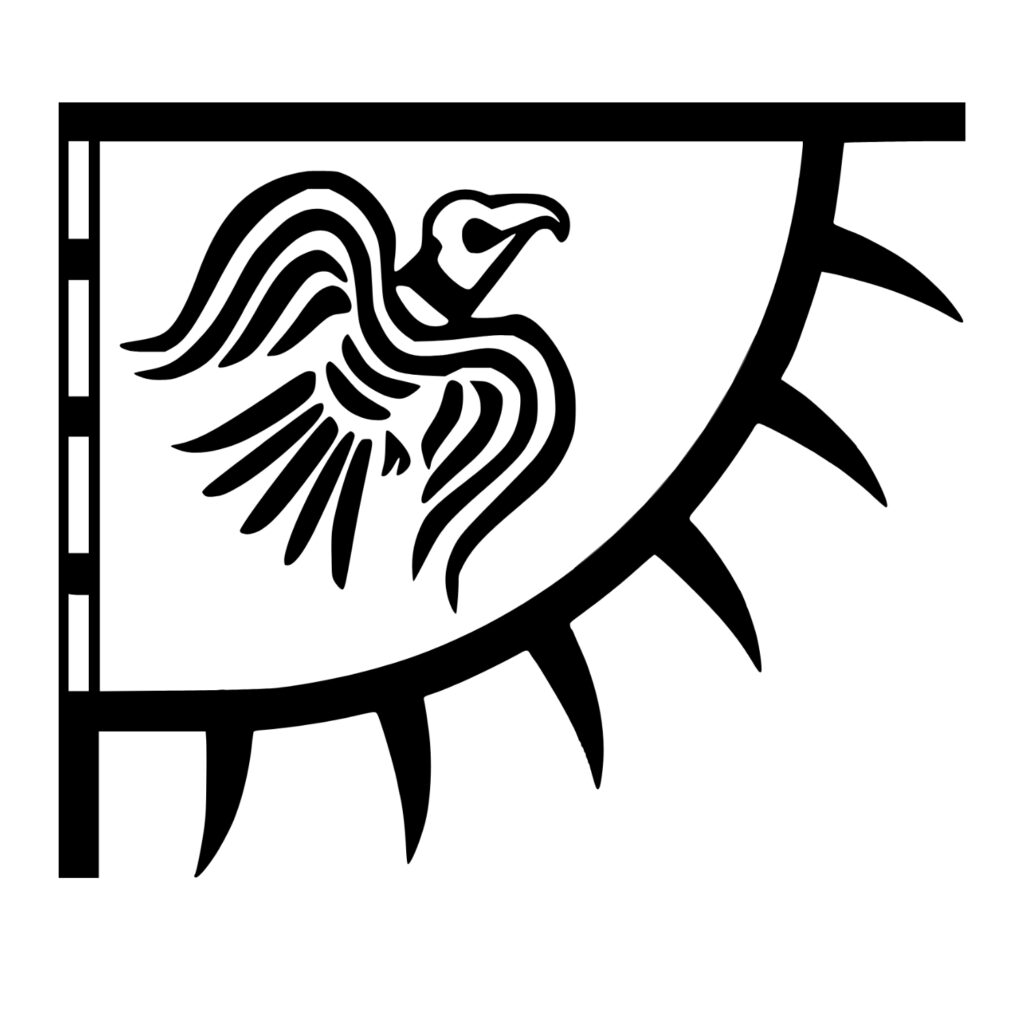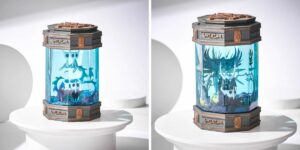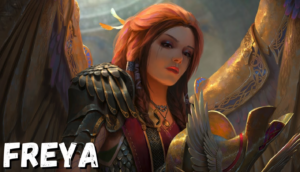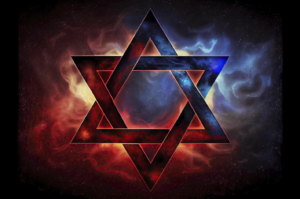Norse flags are enduring symbols of Viking culture, encapsulating the spirit, beliefs, and martial prowess of the Scandinavian peoples from the 8th to 11th centuries. These banners were not mere pieces of cloth but powerful emblems that conveyed identity, allegiance, and divine favour on the battlefield and beyond. The term “Norse flag” evokes images of fierce warriors, longships cutting through stormy seas, and the mysticism of Norse mythology. Historically, these flags served as rallying points for Viking armies, markers of leadership, and talismans believed to influence the outcome of battles. This article explores the significance of Norse flags, focusing on the iconic Raven banner, other notable designs, their craftsmanship, and their lasting influence in modern times.
The Raven Banner: The Most Famous Norse Flag
The Raven banner, known as Hrafnsmerki in Old Norse, is perhaps the most renowned of all Viking flags. Described in historical sources such as the Anglo-Saxon Chronicle and Norse sagas, this triangular banner featured a black raven, often depicted with outstretched wings. Its design was simple yet striking, typically crafted from dark fabric with the raven embroidered or painted in contrasting colours. The raven held profound significance in Norse mythology, closely associated with Odin, the Allfather and god of war, wisdom, and prophecy. Odin was said to be accompanied by two ravens, Huginn (thought) and Muninn (memory), who flew across the world to gather knowledge. As such, the raven symbolised divine insight, destiny, and an omen of victory—or doom—in battle.
Historical accounts highlight the Raven banner’s use by prominent Viking leaders. For instance, Sigurd the Stout, Earl of Orkney, carried the banner during the Battle of Clontarf in 1014, as recounted in the Orkneyinga Saga. The banner was believed to possess magical properties, granting victory to those who followed it but bringing death to its bearer. Similarly, Harald Hardrada, the Norwegian king, is said to have flown the Raven banner during his ill-fated invasion of England in 1066 at the Battle of Stamford Bridge. These stories underscore the banner’s role as both a practical standard and a mystical symbol, inspiring warriors while invoking Odin’s favour.

Other Viking Flags and Their Meanings
While the Raven banner is the most documented, other Viking flags bore distinct symbols reflecting the diverse aspects of Norse culture. The Dragon banner, for example, was associated with royalty and conquest. Often adorned with a serpentine or draconic figure, it signified power and dominance, frequently flown by chieftains or kings asserting their authority. Sources like norseimports.com suggest that dragon imagery drew from myths of creatures like Jörmungandr, the Midgard Serpent, embodying chaos and strength. This banner was particularly prominent on Viking longships, where it struck fear into enemies as it loomed over the horizon.
The Wolf flag, another notable design, symbolised ferocity and protection. Wolves, revered in Norse mythology for their strength and loyalty, were linked to warriors like the berserkers, who were said to channel lupine ferocity in battle. According to vikingwarriorshirts.com, wolf imagery resonated with Viking ideals of courage and guardianship, making it a fitting emblem for warbands defending their kin or territory.
Beyond animal motifs, many Norse flags featured geometric patterns or runic inscriptions. These designs, often intricate and symmetrical, reflected the Vikings’ artistic sensibilities and their belief in the power of runes. Runes, the alphabetic symbols used in Old Norse writing, were thought to carry magical properties, and their inclusion on flags may have served as protective charms or declarations of intent. These varied designs highlight the richness of Viking visual culture, where each flag told a story of identity, purpose, or divine connection.
Norse Flag Materials and Craftsmanship
Viking flags were crafted with the materials and techniques available during the early medieval period. Most were made from wool or linen, durable fabrics suited to the harsh conditions of sea voyages and battlefields. Wool, often sourced from Scandinavian sheep, was prized for its resilience and ability to hold vibrant dyes, while linen offered a lighter alternative for smaller banners. Natural dyes, derived from plants like woad (blue), madder (red), and weld (yellow), created bold contrasts that ensured flags were visible from a distance. Embroidery or appliqué techniques were used to add intricate designs, such as ravens, dragons, or runes, requiring skilled craftsmanship often attributed to women in Viking society.
Flags played a central role in Viking life, both practical and symbolic. On longships, they signalled a leader’s presence and helped coordinate fleets during raids or explorations. In settlements, banners marked gathering places or signified a chieftain’s authority. During battles, flags served as focal points for warriors, helping to maintain cohesion amidst the chaos of combat. The durability and visibility of these banners were crucial, as they needed to withstand wind, rain, and the rigours of travel while remaining recognisable to allies and enemies alike.
Modern Interpretations and Uses of Norse Flags
Today, Norse flags continue to captivate imaginations, inspiring modern designs across various mediums. T-shirts, tattoos, and home decor featuring raven, dragon, or runic motifs are popular among enthusiasts of Viking culture, as seen on platforms like vikingwarriorshirts.com. These modern interpretations often blend historical accuracy with artistic flair, adapting ancient symbols to contemporary aesthetics. For example, a T-shirt might feature a stylised Raven banner with runic accents, appealing to those drawn to Viking heritage or Norse mythology.
In pop culture, Norse flags appear in TV shows like Vikings and The Last Kingdom, where they enhance the visual authenticity of battle scenes. Video games such as Assassin’s Creed Valhalla and God of War also incorporate Norse-inspired banners, embedding them in immersive worlds that celebrate Viking lore. Additionally, festivals like those held in Scandinavia or at historical reenactments worldwide often feature replicas of Norse flags, fostering a sense of connection to the past. These modern uses demonstrate the enduring appeal of Viking symbols, which resonate with themes of strength, exploration, and mysticism.
Where to Find Authentic Norse Flag Replicas
For those seeking to own a piece of Viking history, authentic Norse flag replicas are available from various sources. Retailers like norseimports.com and vikingwarriorshirts.com offer high-quality reproductions, often crafted with attention to historical materials and designs. These replicas range from Raven banners to flags featuring runic or geometric patterns, catering to collectors, reenactors, or anyone fascinated by Norse culture. When choosing a replica, it’s wise to select vendors that prioritise historical accuracy and quality craftsmanship to ensure an authentic representation of Viking artistry.
Conclusion
Norse flags, from the iconic Raven banner to dragon and wolf designs, are more than historical artefacts—they are windows into the Viking world, reflecting their beliefs, artistry, and indomitable spirit. These banners carried the weight of mythology, served as practical tools in battle, and continue to inspire awe in modern times. Whether through the craftsmanship of their creation or their presence in pop culture, Norse flags remain powerful symbols of a storied past. For those intrigued by their legacy, exploring Viking heritage—through replicas, literature, or cultural events—offers a chance to connect with the enduring allure of the Norse world.
Download Norse Flag [FULL HD] [3K]
Illuminating Hallownest: A Deep Dive into the Enchanting Hollow Knight Lamp Collection
Table of ContentsThe Raven Banner: The Most Famous Norse FlagOther Viking Flags and Their MeaningsNorse
Oct
Freya: Queen of the Valkyries in Norse Mythology
Table of ContentsThe Raven Banner: The Most Famous Norse FlagOther Viking Flags and Their MeaningsNorse
1 Comment
Oct
The Star of David (Magen David): A Symbol of Faith and Persecution
Table of ContentsThe Raven Banner: The Most Famous Norse FlagOther Viking Flags and Their MeaningsNorse
Apr




